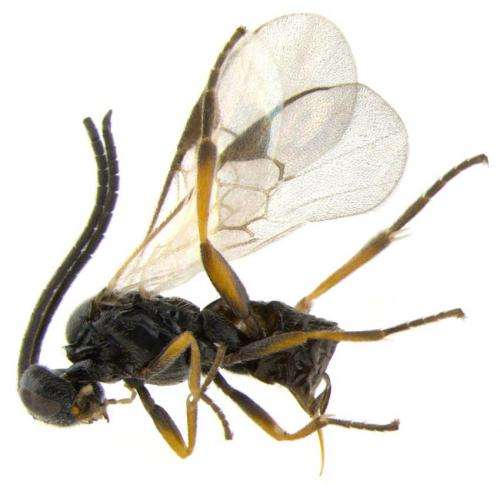Go straight and publish: From Barcode of Life Data Systems to scholarly publishing systems

An innovative workflow reveals new research potential of the Barcode of Life Data Systems (BOLD). A recently published article in the Biodiversity Data Journal (BDJ) used specimen records downloaded from BOLD in tabular format and imported these into a human-readable text developed in manuscript within the Pensoft Writting Tool (PWT). Data were used to study the species distributions of ten Nearctic species of braconid wasps from the Microgastrinae subfamily.
BOLD is originally designed to support the generation and application of DNA barcode data. However, the repository also holds unexplored treasures of additional data that provide unique potential for many other research uses.
Currently almost 4 million sequences (over 3.4 million of them DNA barcodes) are stored in BOLD, including coverage for more than 143K animal species, 53K plant species, and 16K fungi and other species, and this impressive storage of information is continuing to grow every day.
A team of researchers, led by Dr Jose Fernandez-Triana from the University of Guelph, Canada, have now explored how the unique amount of data stored on the BOLD platform can be utilised for new research purposes. Choosing tiny parasitic wasps for their case study they selected a sample of 630 specimens and 10 North American species. Data stored on BOLD were then used to uncover a significant number of new records of locality, provinces, territories and states.
The research was then secured a fast publication via BDJ, a community peer-reviewed, open-access, comprehensive online platform, designed to accelerate publishing, dissemination and sharing of biodiversity-related data of any kind.
"Import of structured data into human-readable text is important but it does not represent the whole story. More importantly, the data can be downloaded straight from the article text by anyone for further re-use, or be automatically exported to data aggregators, such as the Global Biodiversity Information Facility (GBIF). In this way, data platforms could get more peer-reviewed content from scholarly publications and scientists will be properly credited for their efforts" said Prof. Lyubomir Penev, founder of Pensoft Publishers.
More information: Fernandez-Triana J, Penev L, Ratnasingham S, Smith M, Sones J, Telfer A, deWaard J, Hebert P (2014) Streamlining the use of BOLD specimen data to record species distributions: a case study with ten Nearctic species of Microgastrinae (Hymenoptera: Braconidae). Biodiversity Data Journal 2: e4153. DOI: 10.3897/BDJ.2.e4153
Provided by Pensoft Publishers





















